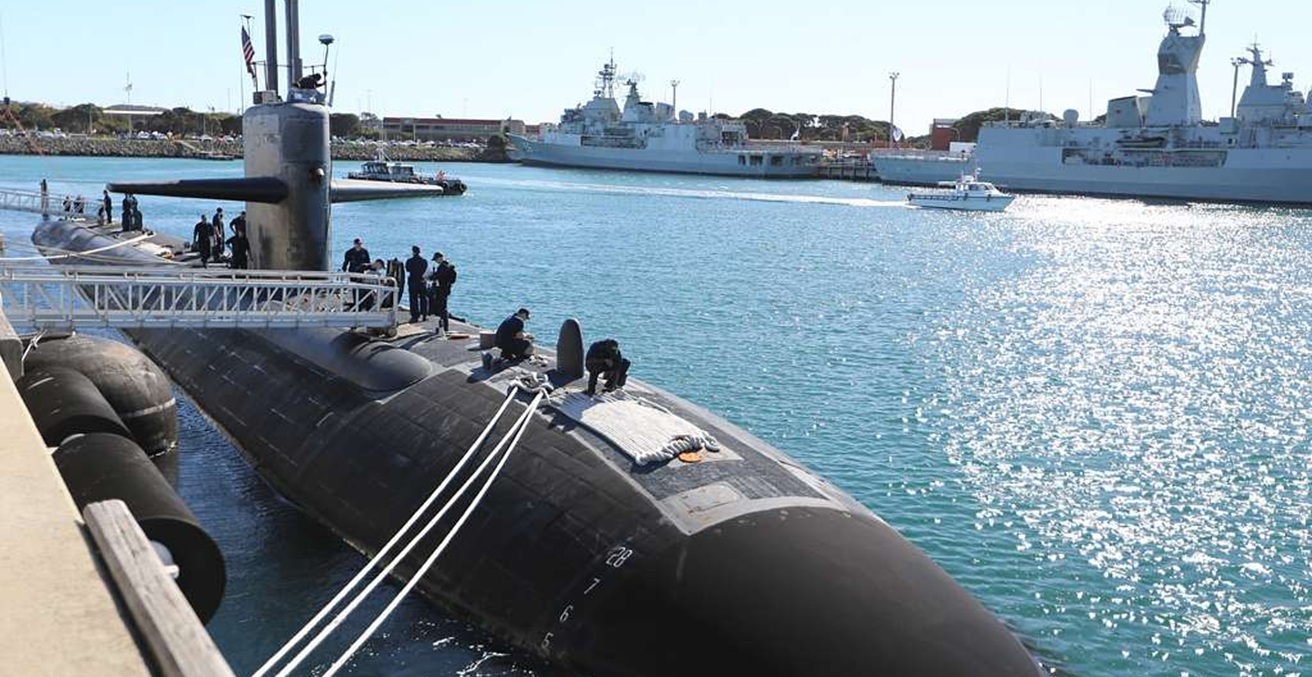This month marks one year since the eruption of the Hunga Tonga-Hunga Ha’apai volcano and the subsequent tsunami that devastated Tonga. Australia, Tonga, and other partners have worked long and hard over the past year to restore Tonga’s agriculture, infrastructure, tourism, and the livelihoods of its people.
The 2016 World Risk Report listed the Pacific island nation of Tonga as the second-most exposed country in the world to natural hazards. Tonga has a history of cyclones and tsunamis, and it lies on the Pacific Ring of Fire, meaning regular earthquakes and volcanic eruptions. On 15 January 2022, the Hunga Tonga-Hunga Ha’apai volcano erupted. This was the most violent volcanic eruption globally since Krakatoa in 1883. The explosion was heard as far away as Canada, and the tsunami that followed left four people dead.
Every person in Tonga was affected in some way. Entire communities were left with nothing but the clothes on their back. Even one year later, some of Tonga’s idyllic tropical beaches are not safe to swim in due to toxins released by the volcanic ash. The ash also affected people’s lungs, although it is too soon to know if these effects are permanent. Entire underwater ecosystems were destroyed, as well as local infrastructure, crops, homes, ports, and schools. Loud noises, dark clouds, and the sound of rain still makes some Tongans nervous.
Although there is still much to be done, Tonga’s immediate, locally led response and recovery has been exceptional. Tonga has had support from numerous partners, including Australia, whose long-term aid programs enabled a productive response and recovery.
The effectiveness of the immediate and ongoing response demonstrates the importance of Australian aid in the Pacific, not only in providing humanitarian relief, but also in building long-term resilience. It also demonstrates the strength and resilience of the Tongan people, and shows why Australia needs to be a constant and supportive Pacific partner with the region’s long-term interests in mind.
Disaster response
The immediate response to the disaster was built on the back of a longstanding development partnership between Australia and Tonga. For decades, Australia has supported long-term projects in Tonga that focus on disaster response, capacity building, economic growth, education, environment, community resilience, and security. Australia supports Tongan government agencies, including the National Emergency Management Office (NEMO), and also works with Australian Humanitarian Partnerships and local civil society partners to deliver its programs.
After the tsunami, the Tongan government sent rescue missions to small islands, where some communities, such as that on the island of Mango, were completely displaced. With the guardian-class patrol boat VOEA Ngahau Koula, provided to Tonga by Australia under the Pacific Maritime Security Program, the Tongan Navy was able to deliver food, water, and shelter, as well as evacuate the 62 inhabitants of Mango island. Australian-provided vessels were also used to make initial damage assessments, evacuate injured people, and deliver aid provided by Australia and other partner nations to isolated communities in the outer islands. Not only were these vessels fit for purpose, but Australian-funded training programs enabled the Tongan Navy to use them effectively.
Australia also deployed HMAS Adelaide and HMAS Canberra to Tonga in the immediate aftermath of the disaster. This was not the first time either vessel had visited Tonga. Both ships had previously docked in Nuku’alofa and engaged in week-long exercises between Australian and Tongan forces. After the tsunami, Australian Defence Force personnel aided in cleaning up inundated areas, including beaches and islands. Australia’s continuous and active presence in the country meant that when HMAS Adelaide and HMAS Canberra arrived in Tonga, they were familiar and positive symbols of Australia’s commitment to Tonga, rather than unknown foreign vessels that the Tongans had never seen or interacted with. Their immediate and wholistic response reinforced positive perceptions of Australia.
Credit where credit’s due
While a lot of Tonga’s physical and economic recovery has been enabled by foreign aid – much of it from Australia – and their own government’s response, Tongans have also drawn on a deep well of psychological, social, and community resilience that comes from their own culture and institutions. After a disaster – whether a tsunami or one of Tonga’s frequent cyclones – Tongans turn to churches, local communities, and family networks for support.
Around 97 percent of Tonga’s population identifies as Christian. For most Tongans, the church functions as more than just a place of worship. It is also a large part of their social life, a source of comfort and welfare, and a fixture in everyday Tongan culture. For instance, when families from the inundated island of Atatā were evacuated to the main island, Tongatapu, they stayed in various church halls until they could be resettled.
Alei Paquette, a local teenager, explained that she, her family, and likely everyone else in Tonga, have lived in a constant state of alertness since the tsunami. However, she believes that Tonga’s regular experiences with disaster have built a level of resilience that allows for quick recovery from natural disasters. She said that the church was an important outlet for people who needed someone to talk to or support them. “Tonga will always take whatever gets thrown at them…In the end, I trust in God to keep us safe,” Alei explained.
Community organisations and local NGOs also play an important role in supporting community resilience. After last year’s eruption, the local Tongatapu community assisted evacuees from surrounding islands with food, as well as sporting equipment and creative activities for younger children to help them deal with the traumatic events, through a local NGO called Talitha Project, which is also supported by Australia.
Family networks have been key to recovery. Many displaced families have been able to stay with extended family on Tongatapu until they can resettle in permanent homes. While Tonga has a population of around 100,000, a diaspora of 150,000 live overseas, mainly in New Zealand, Australia, and the US. At the time of the disaster, those outside Tonga were unable to contact their family back home, and travel to Tonga was impossible until October 2022 due to COVID-19 restrictions. But even with border restrictions and communication problems, extended families overseas rallied to support loved ones back home. Tongans in Australia raised 1.2 million pa’anga (around A$730,000) and donated goods worth around $5 million to assist their affected fellow Tongans.
Looking forward
Australia plays a vital role in the Pacific by building national resilience and supporting Pacific island communities and institutions. Australia’s strong people-to-people links and longstanding aid commitments enable response teams to move quickly and effectively when disaster strikes. By recognising and supporting local strengths, including the role of churches, civil society, and family networks, and being responsive to the needs of Pacific governments, Australian aid dollars are more than just symbolic gestures of goodwill. They are a practical demonstration of Australia’s commitment to building a secure, sovereign, and disaster-resilient region.
This level of commitment is necessary to ensure the sustainability of Pacific islands, not only to withstand unexpected events such as the Hunga Tonga-Hunga Ha’apai eruption in 2022, but also to deal with the more frequent and extreme disasters that can be expected as a result of climate change. Furthermore, during a time of heightened geostrategic competition between Australia and China, positive relationships with Pacific nations are more important than ever for promoting Australia’s interests in the region.
Emily Braun is a second-year student at the Australian National University studying International Relations and Classical Studies. She is an intern at the AIIA National Office. Emily lived in Tonga and went to high school there for two years.
This article is published under a Creative Commons Licence and may be republished with attribution.




